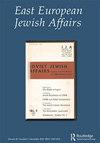Journey into the Land of the Zeks and Back: a memoir of the Gulag
IF 0.2
4区 哲学
Q2 HISTORY
引用次数: 1
Abstract
Jewish internationalism. According to Glaser, the Yiddish poets of her study sought to “build a new religious tradition, modeled on Judaism” that would be “consecrated through its affiliation with the Communist Party” (p. 2) This formulation, it appears, seems to share so much with the construction of the European Christian mission to “distant” and “exotic” souls across empires, Jews included. While many topics relating to Yiddish poets’ complex self-identification remain to be explored, Glaser has provided us with a fine start. The usefulness of this book extends beyond the scholar’s shelf to the classroom, where its contents will no doubt spur lively debate. Songs in Dark Times is an important and sensitive translation and analysis of overlooked poets traversing moral crises, pointing toward a critique that resists analogy while recognizing the full presence of Yiddish colonial and racial discourse from its inception in the 17th century until the present day.《泽克人的土地之旅:古拉格回忆录》
犹太国际主义。格拉泽认为,在她的研究中,意第绪语诗人试图“建立一种新的宗教传统,以犹太教为模式”,“通过与共产党的关系而神圣化”(第2页)。这一提法似乎与欧洲基督教使命的构建有很大的共同点,即在包括犹太人在内的各个帝国中建立“遥远”和“异国”的灵魂。尽管许多与意第绪语诗人复杂的自我认同有关的话题还有待探索,但格拉泽为我们提供了一个良好的开端。这本书的实用性超出了学者的书架,延伸到了课堂上,毫无疑问,它的内容会引发激烈的争论。《黑暗时代的歌曲》是对被忽视的诗人穿越道德危机的重要而敏感的翻译和分析,它指向了一种抵制类比的批判,同时承认意第绪语殖民和种族话语从17世纪开始一直存在到今天。
本文章由计算机程序翻译,如有差异,请以英文原文为准。
求助全文
约1分钟内获得全文
求助全文

 求助内容:
求助内容: 应助结果提醒方式:
应助结果提醒方式:


